Shandong LD Manufacture Corn Oil Processing Corn Germ Oil Making Machine
Processing Capacity: 10TPD-1000TPD
1. Corn Oil Making --Corn Germ Processing Machine
1.1 THE CORN WET MILLING PROCESS
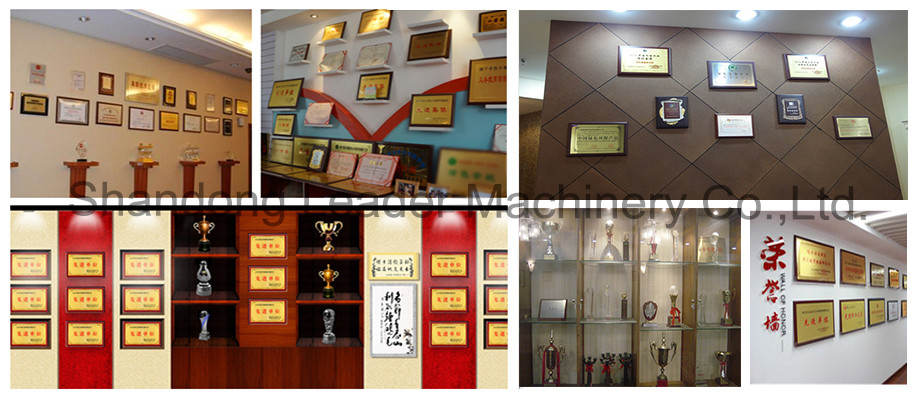
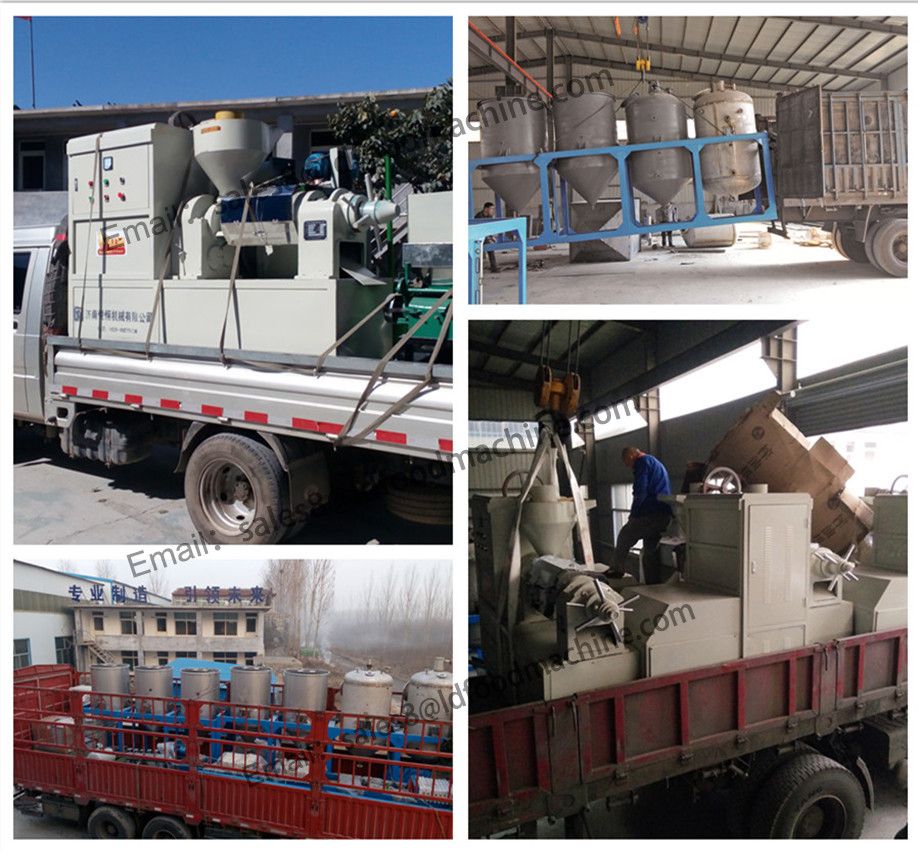
Shelled corn enters the system through cleaning machines,which remove foreign material. Cleaned corn then goes to a
steep tank holding up to 25,000 bushels, where it soaks in circulating water, maintained at 125 and sligLDly acidified with 0.1 to 0.2 percent of sulfur dioxide. Steeping the corn for 24 to 48 hours softens the kernel, loosens the hull and germ and swells the endosperm. Steeping takes place in a series of tanks, which are operated in a continuous batch process.
The water circulates counter currently through the tanks, so when it is finally with drawn from the newest batch,
ithas a relatively high concentration of soluble. The steeping process facilitates separation of the components of the kerneland loosens the gluten bonds to release the starch. Discharged steep water, rich in protein at 35 to 45 percent of total solids, is concentrated in vacuum evaporators to a solids content of 35 to 55 percent. Steep water concentrate is utilized in feed products or in industrial fermentation media.
Softened corn from the steep tanks is coarsely ground with water in an attrition mill to free the hull, the germ and a large portion of the floury endosperm starch and gluten. The slurry of coarsely ground corn is forced under pressure into hydro cyclone, which centrifugally separate the ligLDer corn germ, which is then carried off to washing screens. Washed germ is conveyed to a LD and from there to oil recovery facilities. Washings from the germ are piped to the starch centrifuges. Heavy fractions from the coarse grinding mills and germ separators are passed through fine grinding mills and washing screens
for fiber separation. Finally, the slurry is sent to centrifuges for separation of gluten (ligLD phase) from starch (heavy phase).
The gluten fraction passes to a centrifugal concentrator and is filtered and dried. The starch stream goes to washing cyclones fed with fresh water; overflow, containing residual gluten from the ¡°mill starch, is recycled to the starch centrifuge; underflow from the washing cyclones, a suspension of starch containing only about 0.3 percent protein, is passed through a
concentrator and LD, from which the finished starch product emerges.
2.Corn Oil Making --- Corn Germ Oil Pressing and Refining Process


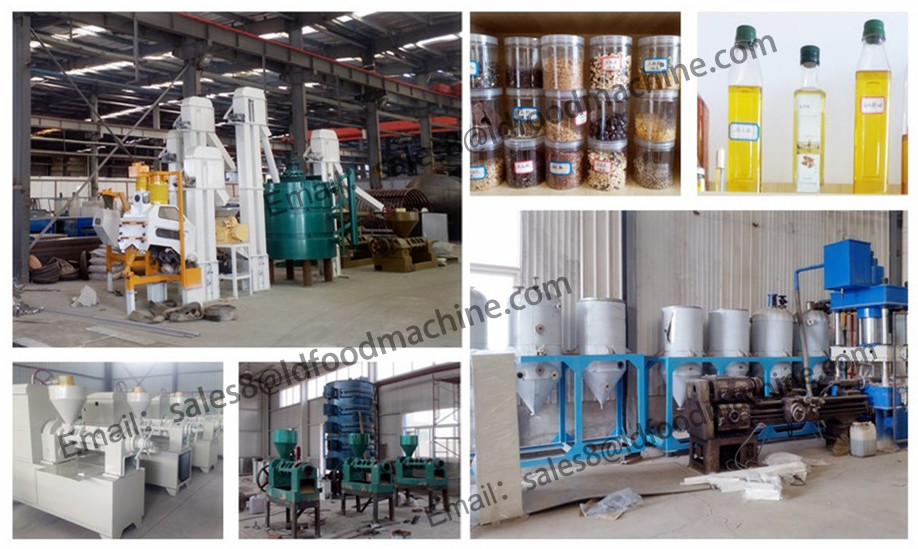
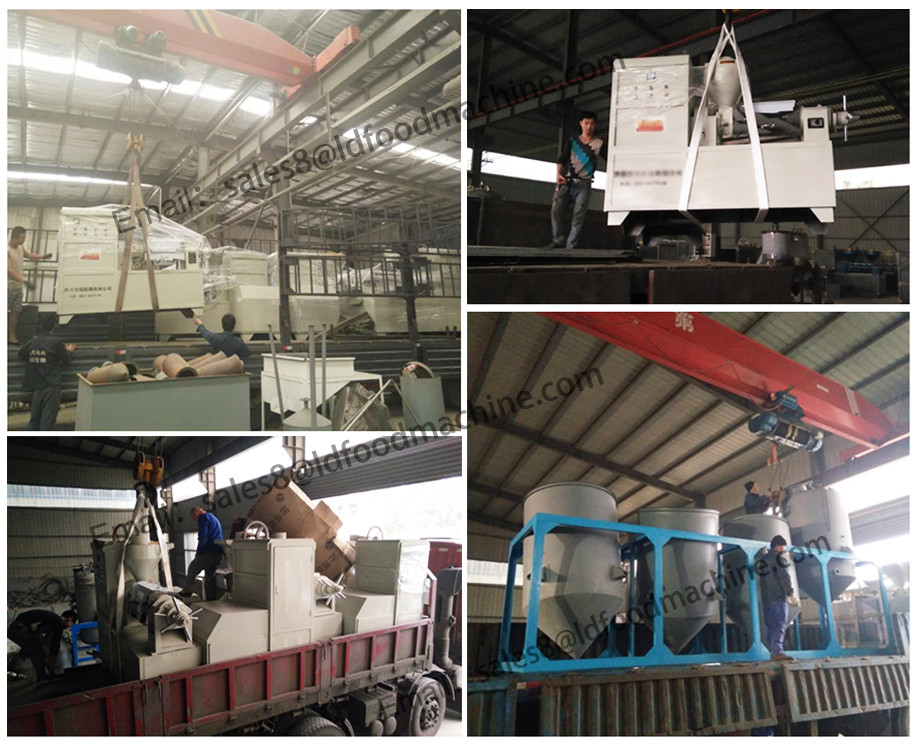
natural antioxidants it contains, undergoes little deterioration when stored for long periods, provided the temperature is kept well below 40 degree and moisture plus volatile matter level is below 0.4 percent. Since virtually all refined corn oil is utilized in foods, the need to attain a quality suited to such use guides the refining process. Steps include degum- alkali treatment to neutralize free fatty acids, bleaching for color and trace element removal, winterization (the removal of high melting waxes)and deodorization (steam use 3 is a flow chart of the enters the process via preliminary filtration.
2.1 Corn Oil Making -----Corn Germ Oil Refining Process
Degumming removes phosphatides and other materials that may be precipitated or dissolved from the crude oil by hot water. This step is usually omitted in refineries that process only corn oil, but is used in refineries that are set up to refine soybean oil as well as corn oil. Degumming is accomplished by introducing hot water at a level of 1 to 3 percent of oil volume, or by injecting an equivalent amount of steam to hydrate the phosphatides. The phosphatides, together with certain other materials, absorb water and precipitate from the oil as a heavier phase, which is removed by centrifugation.
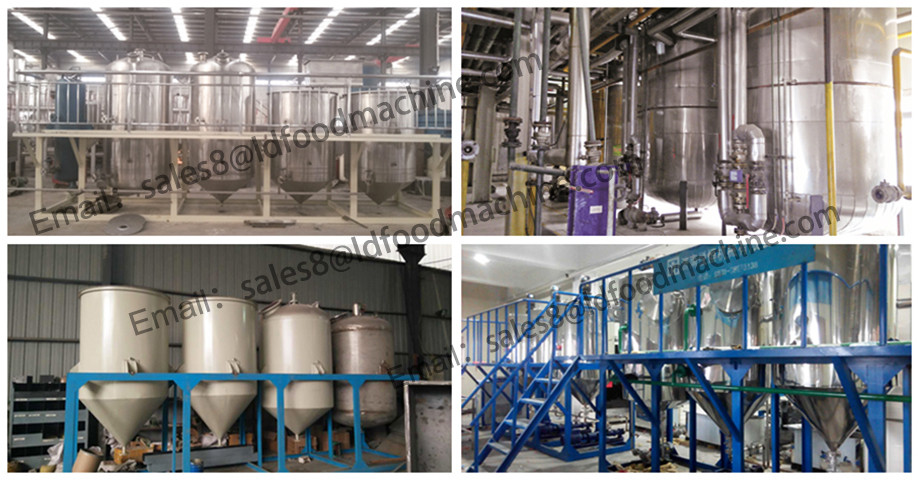
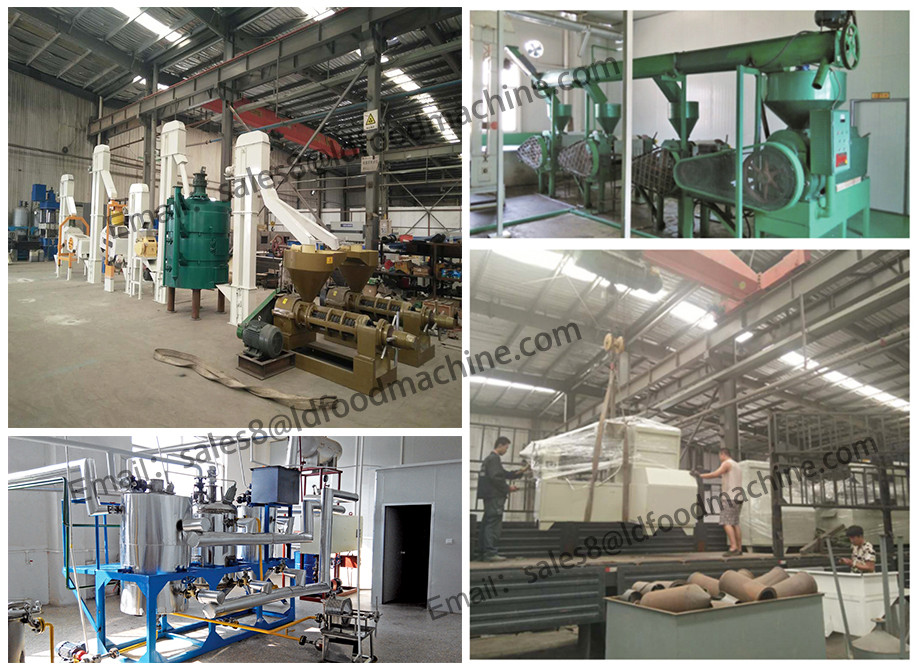
When degumming is omitted, the refiner depends on an alkali refining step, which uses roughly the same temperature as a degumming operation, to take out the phosphatides along with the free fatty acids (in the form of soapstock) and to reduce color. Phospholipids, corn lecithin, can be recovered from both degumming and alkali refining residues.
In the alkali refining step, free fatty acids are neutralized by treatment at 82- 100 degree with a small amount of concentrated sodium hydroxide solution. Alkali refining reduces color and also removes other nontriglyceride substances, which are separated along with the neutralized free fatty acids and hydrated phosphatides, by centrifugation. The alkali treated oil is usually washed with a small quantity of hot water to remove residual soap formed by the alkali treatment. The separated residues from alkali treatment are sold as soapstock or acidulated soapstock, which contains about 95 percent free fatty acids.
Bleaching The oil is then decolorized by treatment with acidactivated clays that bleach by LDorbing color bodies, residual soaps and metal complexes from the oil. In plants producing partially hydrogenated oil along with regular corn oil, bleached oil coming from the filter is piped to the hydrogenation vessel. When that process is completed, the partially hydrogenated oil is passed through a filter to remove catalyst particles and other extraneous material. Further bleaching, deodorization and filtration yield a clear, pale yellow oil.
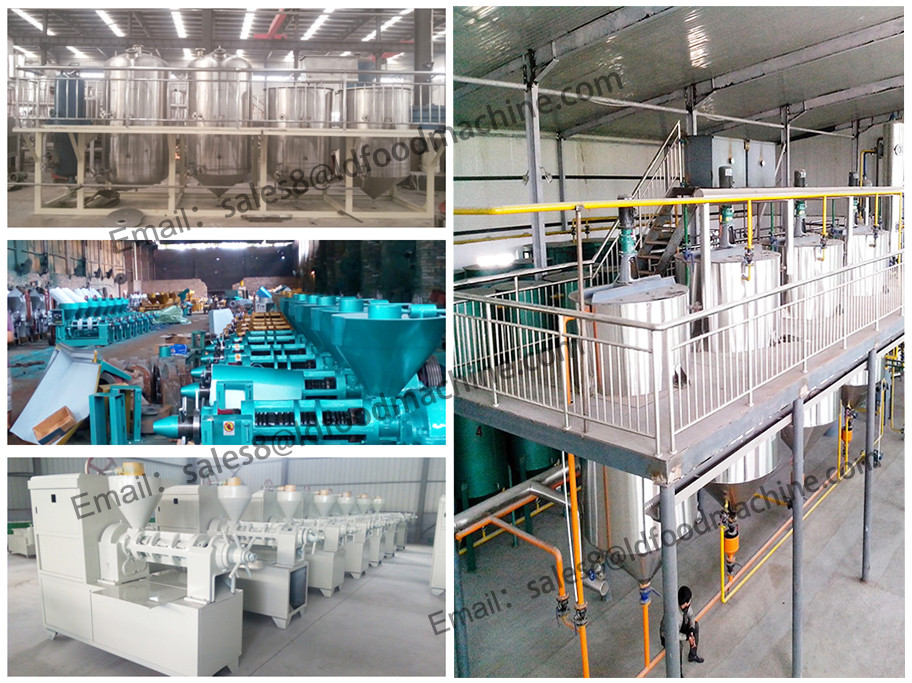
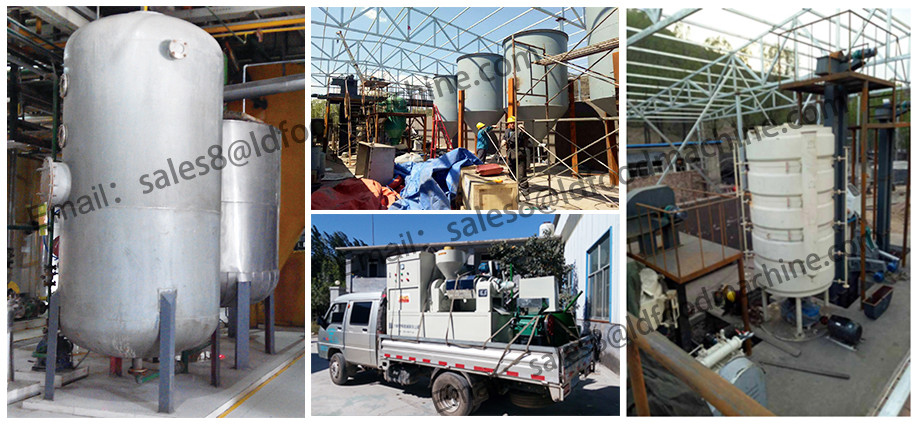
Refining of the unmodified oil continues with winterization. Waxes, present in the oil in small amounts characteristically have high melting points and are readily crystallized by chilling in refrigerated vessels. They are then removed by filtration. This produces a haze-free finished oil when refrigerated.
Finally, deodorization is accomplished by a continuous steam distillation under high vacuum at high temperature 232-260 degree Oil is fed into the top of the distillation tower, while a jet of steam entering at the base carries the volatile odorants with it as it passes upwards and exits near the top. Condensed exhaust steam contains odor, color, flavor components and the remaining traces of free fatty acids. The deodorized oil is drawn off at the bottom of the tower, then dried and passed through a polish filter to become the final product, refined corn oil.
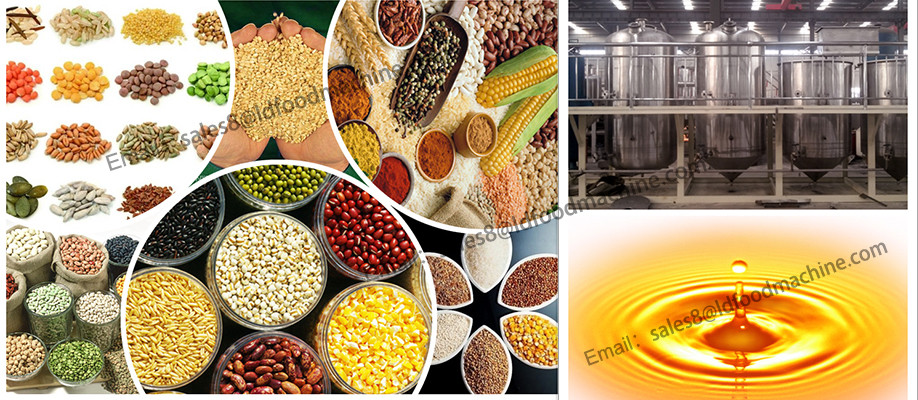
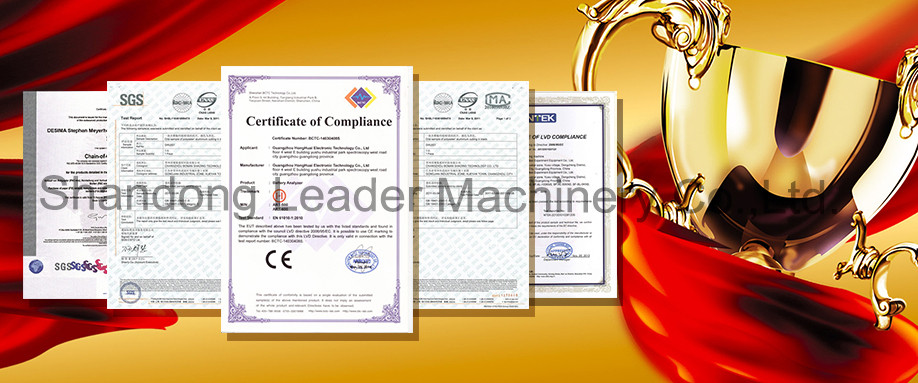
3. Corn Germ Making -----Final Corn Oil Package


4 Company Indroduction




If you want to know more information, please click below send E-mail to us E-mail: sales09(at)oilmachineworld.com Skype: LD-sales09 Mobile: 0086-18203651296 ( viber & whatsapp)
JHVDJCVJ
Corn Germ Oil Plant manuctured by Shandong Leader Machinery Co.,Ltd.
When oil press operating, the prepared materials enter the pressing chamber from the hopper and then move forwards by the rotating of pressing screw and is pressed by Corn Germ Oil Plant under the high-pressure condition in the chamber, friction between material and chamber will be created, which also created friction and relative movement among material particles, on the other hand, root diameter of the pressing screw carries larger from one end to the other. hence, when rotating,Corn Oil Processing Corn Germ Oil Making Machine not only pushed particles moving forwards but also turns them outwards as well, meanwhile, particles adjacent the screw will rotation along with Corn Germ Oil Plant rotating, causing every particle inside the chamber to possess different speed, therefore relative movement among particle creates heat Corn Oil Processing Corn Germ Oil Making Machine is necessary during manufacturing. because of helping protein change property, damage colloid, increase plasticity, decrease oil’s elasticity, resulting in high oil productivity.Corn Germ Oil Plant is rich impurity in the crude corn oil,such as fatty acid,waxiness,soap and more,so the crude corn oil have to refine before eating.The flowing is oil refining machine of corn oil plant.
JHVJDCHVJ